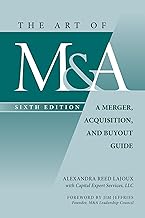
The Art of M&A® / Postmerger Integration
An excerpt from The Art of M&A, Sixth Edition: A Merger, Acquisition, and Buyout Guide by Alexandra Reed Lajoux
From a general, strategic point of view, how can managers increase shareholder value after a merger?
A number of general strategies appear to build the value of a company’s shares, no matter how that value is measured. Here are three to consider:
■ Aim for continued, profitable growth. When it comes to shareholder value, profitable growth is superior to cost-cutting, and unprofitable growth is superior to downsizing. Companies that grow profitably have a disproportionately higher stock appreciation than do companies that only cut costs: a dollar earned through growth is worth more to shareholders than the same dollar earned through cost-cutting. (Of course, in some cases, cost-cutting and downsizing may be the best option.)
■ Alternate external and internal growth. In pursuing growth, a company can buy or build. Obviously, by the time a company has reached the integration stage, it has already chosen to buy rather than build in at least one case. But after every major acquisition, a company starts back on square one with the same question: Should we continue to buy rather than build, or should we spend time building instead? Most companies alternate the two strategies, going from periods of acquisition to periods of internal growth, just as farmers rotate crops. These companies take time to integrate major acquisitions before embarking on new ones. (Again, there is not a single correct choice. Some companies may be suited to growth that is entirely internal, others to a steady flow of acquisitions.)
■ Develop and disclose good corporate governance practices. Corporate boards that practice good governance are likely to have the independence and expertise necessary to oversee financial performance after a merger. Good governance practices include, but are not limited to, independence of the board and its key committees (such as the audit committee), development and disclosure of processes for senior executive evaluation and compensation, and lack of undue restrictions on shareholder voting. Although individual companies lacking some or all of these practices may be successful for long periods of time, these practices tend to be associated with positive share price performance, and many business catastrophes can be traced in part to the absence of one or more of them.
Are there any model governance standards a merging company could consider adopting?
The most comprehensive and stringent governance standards in the United States today are the ones required of New York Stock Exchange companies. 43 NYSE listed companies are required to develop and disclose governance guidelines covering several set topics; the websites of all public companies list those (typically under Investors). Other countries have similar requirements. Globally, organizations such as the International Organization of Securities Commissions (IOSCO)44 or the Global Network of Director Institutes (GNDI)45 have issued their own standards summarizing views of their globally diverse memberships.
What postmerger financial indicators are most important to shareholders?
Shareholders will look at sales growth and earnings growth, as well as several key ratios based on numbers from the balance sheet, the income statement, and/or stock prices.
In debt-financed acquisitions, shareholders may focus on ratios involving debt, namely:
■ Current ratio (current assets/current liabilities)
■ Debt ratio (total liabilities/total assets)
■ Debt-equity ratio (total liabilities/total equity
■ Net working capital (current assets minus current liabilities)
If the merger was financed through equity capital, then shareholders may focus on ratios involving equity:
■ Earnings per share (net income - preferred dividends/common shares outstanding)
■ Price/earnings (market price per common share/earnings per share)
■ Equity ratio (total stockholders’ equity/total assets)
■ Return on common stockholders’ equity (net income - preferred dividends/average common stockholders’ equity)
If a company issues more shares to pay for a merger, this may dilute the value of shares. How can a company mitigate concerns about this?
First, be straightforward about the dilution. Shareholders will notice it, so you might as well point it out and explain it. If future earnings prospects are good, say so, then explain how they will be achieved.
Are there any rules against dilution?
No, but there are rules that require disclosure and/or approval of potentially dilutive transactions. For example, in the mutual fund area, the SEC requires the board of any mutual fund that merges with a trust fund or account not registered with the SEC to make sure that the interests of the fund’s shareholders will not be diluted as a result of the merger. Valuation is a key part of this determination. 46
________________________________________________________________________
43 See Section 303.A00 in https://nyseguide.srorules.com/listed-company-manual/
44 Report on Corporate Governance, International Organization of Securities Commissions (IOSCO), October 2016, http://www.iosco.org/library/pubdocs/pdf/IOSCOPD544.pdf.
45 See “Guiding Principles of Good Governance,” May 6, 2015, under Papers, at Global Network of Director Institutes, gndi.org.
46 " Proper valuation, among other things, promotes the purchase and sale of fund shares at fair prices, and helps to avoid dilution of shareholder interests " Final rule: Good Faith Determinations of Fair Value (March 8, 2021), p. 5. https://www.sec.gov/rules/final/2020/ic-34128.pdf
_________________________________________________________________________

Learn more about mergers, acquisitions and divestitures at M&A Leadership Council's virtual or in-person training courses. Network with other M&A professionals while our expert consultant trainers will get you ready for your next transaction (or help an ongoing one) through practical insights, group discussions, case studies, and breakout exercises.
Lajoux, Alexandra Reed with Capital Expert Services. The Art of M&A, 6th Edition: A Merger, Acquisition, and Buyout Guide. United States of America: McGraw Hill, 2024.
